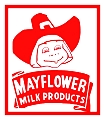|
D.E. Frederick’s dreams for expansion of the original store at Pine Street and Fifth Avenue finally were finally realized when the grand opening was celebrated August 4, 1952. There were 10 floors above ground and two below.
On the tenth floor, the company built a modern candy kitchen that could turn out more than five hundred thousand pounds of Frango Chocolate a year.
By 1980, Frederick and Nelson became one of the fastest growing stores in the nation, quadrupling from four stores to 15. Marshall Field’s acquired three Liberty House Stores in Portland and two in Tacoma as well as six Lipmans stores in Oregon from the Dayton Hudson Corporation.
They were all converted to Frederick & Nelson stores. By the mid-1980’s they were beginning to close the Oregon stores. One Oregon location at Washington Square lasted until 1990.
Management changes occurred in 1982 when Batus Inc. of Louisville, Kentucky bought all of the outstanding stock of Marshall Field and Company. The Batus Retail Division now included Marshall Field’s, Saks Fifth Avenue, Frederick and Nelson, Gimbels, Kohl’s and a number of other Department Stores.
Ownership would change three more times in the next nine years as business went on a downward spiral. Batus sold the money-losing Frederick & Nelson to local investors in January 1986, and shed itself of Gimbels and Kohl’s as well.
Poor management decisions led to an over abundance of lower-priced, out-of-season merchandise and large investments in inventory at the wrong prices.
Frederick & Nelson was no longer known for trendy, upper-end clothing and a weak economy started a trend that eventually brought the downfall of this once great institution.
Local investors weren’t able to keep the institution alive. After over 100 years in business, Frederick & Nelson could no longer pay the bills and closed the doors for the last time in 1992.
The building was later remodeled and opened as Nordstrom’s flagship store several years ago. Nordstrom’s began as a small shoe store in Seattle.
|
